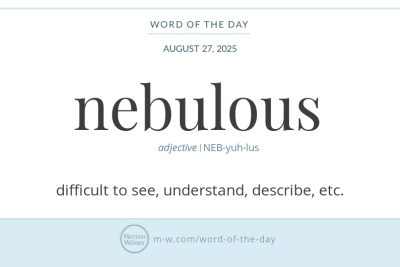
Understanding When to Use 'Essential for' vs. 'Essential to'

When it comes to mastering the English language, one of the most nuanced challenges lies in understanding the subtle differences in phrases that may appear interchangeable at first glance. A common point of confusion arises from the usage of 'essential for' and 'essential to'. These phrases can dramatically change the meaning of a sentence depending on the context in which they are used. This article aims to provide a comprehensive understanding of when to use 'essential for' versus 'essential to'.
By grasping the subtle distinctions between these two phrases, writers and speakers can enhance their communication skills, ensuring clarity and precision in their messages. Recognizing that language often hinges on context is vital for effective usage; knowing when to use 'for' or 'to' can significantly influence the overall meaning of a statement. This exploration will cover definitions, contextual applications, common mistakes, and more, providing you with the tools necessary to navigate these phrases with confidence.
The Importance of Context in Language
The foundation of effective communication is context. Language is fluid, and meanings can shift depending on the surrounding words and situational factors. As such, understanding when to apply 'essential for' or 'essential to' requires a keen awareness of context. For example, in specific sentences, the phrase 'essential for' may imply a necessity linked to a particular outcome or goal, while 'essential to' emphasizes the importance of something foundational to a process or idea.
In written and spoken communication, context shapes how we perceive language. The nuances between these phrases can lead to misunderstandings if not used correctly. Thus, recognizing the different contexts where 'essential for' and 'essential to' are appropriate is vital for both learners and proficient speakers of English.
Defining 'Essential for'
The phrase 'essential for' typically indicates a necessity tied to a specific action, task, or outcome. It suggests that something is needed in order to achieve a particular result. When using this phrase, one often refers to tools, skills, or resources that contribute to a larger goal. For instance, in the sentence, “A laptop is essential for completing research assignments,” it highlights that the laptop is a vital component for fulfilling the requirement of completing research tasks.
Moreover, the phrase can relate to circumstances or conditions that facilitate particular processes. For example, “Water is essential for growing healthy plants,” indicates that water is a necessity that enables the growth of plants. Thus, when determining whether to use 'essential for', consider if you're referring to a necessity that plays a supportive role in achieving something.
Defining 'Essential to'
Conversely, the phrase 'essential to' conveys a stronger sense of necessity as it pertains to something that serves as a fundamental component or is inherently critical to an overall concept or process. This phrase often signals a deeper relationship between the subject and the being described. For example, “Understanding basic mathematics is essential to excelling in engineering” illustrates that basic mathematics is not just necessary but foundational for excelling in the field of engineering.
When using 'essential to', the context often shifts toward the predicate, creating a connection that embodies significance. An example might be, “Communication is essential to maintaining healthy relationships,” which suggests that communication is a core aspect that upholds the foundation of any relationship, making it critically important.
Usage Examples of 'Essential for'
To further illustrate the use of 'essential for', let’s explore a few examples that depict how this phrase is deployed in various contexts:
- “Proper nutrition is essential for achieving optimal physical health.” This emphasizes that adequate nutrition is necessary for health outcomes.
- “Experience is essential for landing a good job.” Here, experience is highlighted as a critical factor in achieving job placement.
- “A strong foundation is essential for building a house.” The strong foundation is necessary for the housing structure to be stable.
These examples illustrate the supportive role of what is deemed “essential” in achieving desired outcomes, where 'for' is the connector that links necessity to the result.
Usage Examples of 'Essential to'
Now let’s examine some usage examples of 'essential to', focusing on contexts that showcase its role as a foundational element:
- “Critical thinking is essential to problem-solving skills.” Here, critical thinking is portrayed as a fundamental aspect required for effectively solving problems.
- “Self-discipline is essential to personal development.” This emphasizes the inherent need for self-discipline in the journey of personal growth.
- “Trust is essential to building strong teams.” Trust is presented as a core component for the formation of effective teamwork.
These examples clarify how 'essential to' indicates a deeper significance that underscores foundations, rather than merely supporting actions.
Key Differences Between the Two Phrases
The differences between 'essential for' and 'essential to' can be distilled into a few key points:
- Purpose vs. Foundation: 'Essential for' often refers to elements that contribute to an outcome, while 'essential to' denotes elements that are foundational or inherently critical.
- Context: The choice between the two phrases largely depends on whether you are emphasizing a necessity related to an action or one connected to a concept.
- Followed By: Typically, 'essential for' is followed by a noun or noun clause, whereas 'essential to' is more commonly followed by a verb or statement that reflects importance.
By understanding these distinctions, you can more accurately choose the correct phrase based on your intended meaning in communication.
Common Mistakes to Avoid
- Mixing the Phrases: One of the most frequent errors is using 'essential for' when 'essential to' is more appropriate, and vice versa. For example, saying "Critical thinking is essential for problem-solving" instead of "Critical thinking is essential to problem-solving" can alter the intended meaning.
- Neglecting Context: Failing to consider the context in which you are using these phrases may lead to confusion. Always ask what role the subject plays—supportive or foundational.
- Overgeneralizing: Assuming that either phrase can be used interchangeably in all contexts can lead to misunderstandings. Caption your use of each phrase carefully to convey the correct nuances.
By being aware of these common pitfalls, you can improve your language skills and prevent miscommunication.
Conclusion: Choosing the Right Phrase
In conclusion, the distinction between 'essential for' and 'essential to' is rooted in context and the relationship between the components of a sentence. Understanding when to use 'for' or 'to' is crucial for conveying the correct meaning in your communication. Remember that 'essential for' is used when talking about necessities linked to specific outcomes, while 'essential to' refers to foundational aspects integral to overall concepts.
By practicing and applying these rules in your writing and speech, you will gain a clearer understanding of the nuances of English. Ultimately, enhancing your mastery over these phrases will elevate your communication skills, enabling you to express ideas more effectively and accurately.
Did you find this article helpful? Understanding When to Use 'Essential for' vs. 'Essential to' See more here Education.
Leave a Reply






Related posts